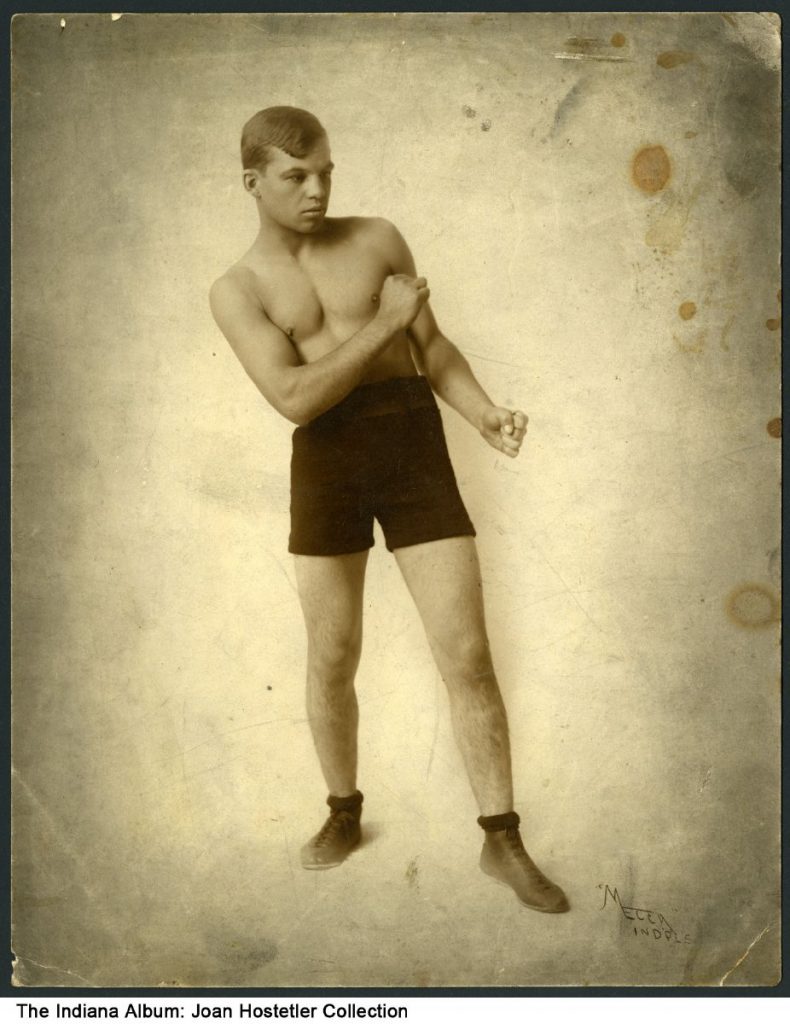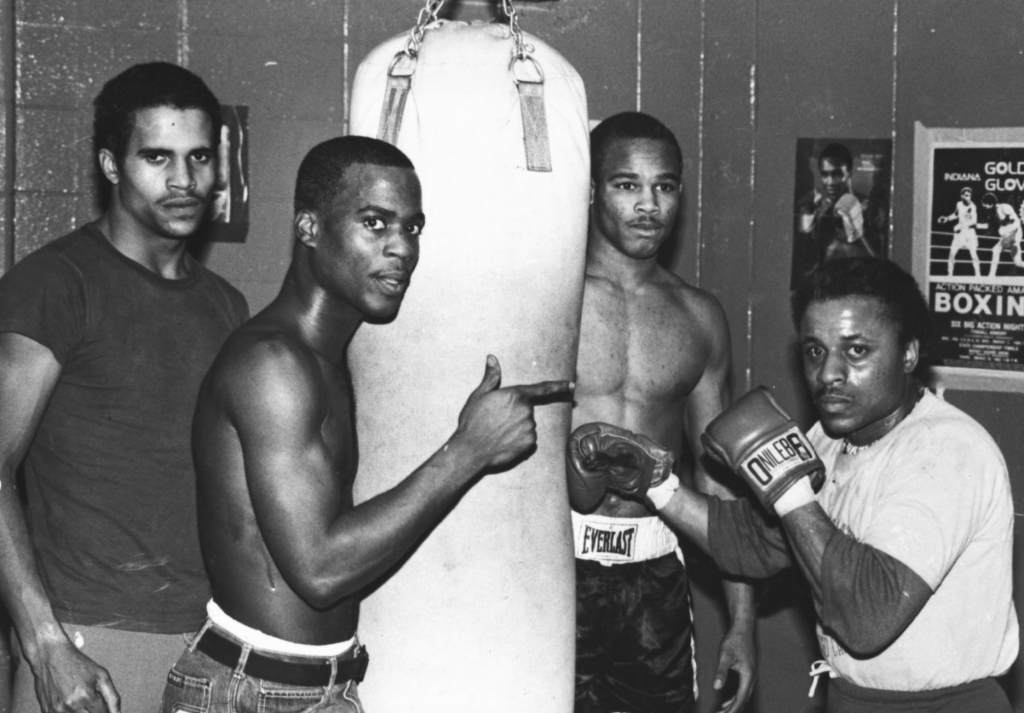Very little is known about boxing in early- and mid-19th century Indianapolis. Professional boxing was not yet organized. At that time there was a big difference between “professional prizefighting” and amateur “boxing.” Prizefighting was considered a hooligan sport that gamblers and saloonkeepers promoted. Boxing, or the “manly art of self-defense,” was considered a gentlemanly form of exercise taught and practiced at YMCAs and private athletic clubs across the country.
Professional boxing’s image changed in the early 1890s. James “Gentleman Jim” Corbett, a prominent San Francisco banker, gained national fame as a heavyweight contender and was the first professional fighter backed by a private athletic club. His knockout of hulking heavyweight champion John L. Sullivan in New Orleans in 1892 ushered in a new age of respectability for prize fighting. Big brawlers were out; lithe, crafty ring tacticians were all the rage. One boxer who took advantage of this new trend was Moscow, Indiana, native Norman Selby. Selby billed himself as Kid McCoy from Indianapolis and fought several bouts in the city in the early 1890s, but he never trained or lived in the capital. While the popular expression “the real McCoy” did not originate with Selby, it is attributed to Selby’s career.

Most states deemed prize fights illegal until well into the 20th century. But by the early 1900s boxing became a popular sport nationwide and many tolerant cities permitted professional fights. In Indianapolis, local promoters staged regular shows at the . By 1912 fights between well-known contenders were being held at , the West Washington Street Ballpark, the Virginia Avenue Auditorium, and . Several local fighters from this era became famous contenders and champions. Ray Bronson and Milburn Saylor fought championship bouts in several different weight classes and Jack Dillon, the “Hoosier Bearcat,” became middleweight champion.
In the years preceding , reformers pressured officials to enforce the state law against prizefighting. In 1913 Mayor announced he would permit only one boxing match per year in the city. Local promoters fought over the rights to the annual match, which was held on the eve of the . Governor Samuel Ralston stepped in to stop the match after widespread reports of bribery and political corruption in 1916.
Concern about the evil effects of boxing diminished after the war, and by the 1920s Indianapolis had gained a national reputation as a good inland fight town. Louis Farb, who handled prominent fighters Jack Dillon and Kid Chissell, became one of the best-known promoters in the Midwest. Farb was the first promoter to stage fights at Cadle Tabernacle and twice drew crowds of over 10,000 there.
Despite the legalization of boxing in 1931, local interest in professional matches waned in the 1930s and 1940s. In 1952 a group of businessmen formed the Hoosier Boxing Club (HBC) to promote professional boxing in Indianapolis and help develop young prospects. Within three months HBC President Robert Wormser arranged the city’s first nationally televised fight. The 10-round exhibition match between lightweight champ Kid Gavilan and Fitzie Pruden took place at the Coliseum before 7,200 fans.
Local promoters continued to stage fights around Indianapolis, particularly at , but local interest in professional boxing remained low. The early 1970s saw a new interest in the sport with the rise of local boxer Marvin Johnson. After winning several national amateur titles and a bronze medal at the 1972 Olympics, Johnson was considered one of the most promising young fighters in the nation. Two other local fighters, Norman Coins and Sammy Nesmith, achieved national fame as lightweight and middleweight contenders but neither made it to the top of the profession. Johnson was more fortunate, winning the light heavyweight crown with a knockout of Mate Parlov in Marsala, Italy, in 1978. In 1979 he defended his world title in a nationally televised bout against Matthew Franklin at . Johnson lost the fight but went on to win the title two more times. His third championship victory a TKO (technical knockout) of champion Leslie Stewart at Market Square Arena in 1986, made him the only man to win the light heavyweight crown three times.

Widespread interest in amateur boxing began with the establishment of the Golden Gloves program in 1933. Local amateur boxers competed for championships in the annual state Golden Gloves tournament in Indianapolis. Held either at the armory or at the fieldhouse, this tournament’s final round regularly drew crowds of over 6,000. Today the state Golden Gloves tournament is held at the .
During the early 1970s ring experts considered Indianapolis to have the nation’s best amateur boxing. Two men responsible for the city’s success were at Camp Atterbury and Colion “Champ” Chaney of the clubs. Chaney began a long association with Marvin Johnson in 1969. U.S. National Boxing Coach Sarge Johnson became internationally famous for his work with the 1976 U.S. Olympic Boxing Team which won five gold medals at the Montreal games. He trained many local fighters, most notably Coins and Nesmith, before dying tragically in a 1980 plane crash that claimed the lives of the entire U.S. National Boxing Team.
*Note: This entry is from the original print edition of the Encyclopedia of Indianapolis (1994). We are currently seeking an individual with knowledge of this topic to update this entry.

Help improve this entry
Contribute information, offer corrections, suggest images.
You can also recommend new entries related to this topic.
